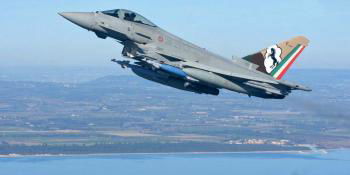Chen Chuanren looks at Singapore Airline’s latest milestone aircraft, the Boeing 787-10


AFTER FIVE years of waiting, Singapore Airlines (SIA) received its first Boeing 787-10 Dreamliner, 9V-SCA (c/n 60253) on March 28.
Singapore’sflag carrier became the first airline tofly the largest version in the 787 family, and the arrival of the aircraft gave a boost to the airline’s recent modernisation andfleet renewal.
SIA’s Dreamliner journey
With the delivery, SIA became the first airline group to operate all 787 variants. It initially ordered 20 787-9s in 2007, but announced in 2012 these would be transferred to the group’s low-cost long-haul airline subsidiary, Scoot, for itsfleet expansion. Scoot later converted 10 787-9s to the 787-8 and the first 787-9 was delivered in February 2015. The 787-8 entered service in May 2017, with crew rest bunks for long-haul operations to Europe. Today, Scootflies ten 787-9s and six 787-8s, with four more on order.
The parent airline SIA ordered 30 787-10s in 2013 and signed a letter of intent for 19 more 787-10s and 20 777-9s in February 2017. The latter deal was finalised on October 23, 2017, witnessed by Singapore Prime Minister Lee Hsien Loong and US President Donald Trump in a state visit to Washington DC. The deal made SIA the biggest customer for the 787-10, with 49 on order. The order gives SIA theflexibility to convert other 787-10 models to 787-9s.
Boeing officially handed over the first 787-10 to SIA on March 25 at the company’s North Charleston, South Carolina, production facility. There, SIA’s second (9V-SCB, c/n 60254) and third (9V-SCC, c/n 60255) 787-10s were already built and undergoing certification; 9V-SCBflew to Singapore’s Changi Airport on April 4. SIA will take on six more 787-10s in this fiscal year. It is also interesting to note that two of the 787-10 test aircraft, N565ZC (c/n 60257) and N528ZC (c/n 60256), will be refitted to SIA’s standards and delivered in August and October this year.
The airline group’s SIA Engineering Company is also part of a major joint venture with Boeing, which provides maintenance, repair and overhaul services for Boeing 737s, 747s, 777s and 787s. With over three years of technical and operational experience on the 787, the SIA Group is set to possess some operational and logistical advantages for the Dreamlinerfleet over some operators.
Routes
Unlike the 787-8 and 787-9, the 787-10 has a shorter range of 6,430 nautical miles (11,910km) and will be utilised for SIA’s Asia-Pacific operations, forflights up to eight hours. However, at maximum range, the aircraft is still able to reach New Zealand and the entirety of Asia from its hub in Singapore.
The Dreamliner and some regional A350-900s will eventually replace the Airbus A330-300 and Boeing 777-200 that ply these routes.
The airline announced in February 2018 that Osaka will be the 787-10’s first destination, followed by Perth, both starting from May. In the interim, SIA will begin crew training on the 787- 10 to nearby Bangkok and Kuala Lumpur for most of April.


Goh Choon Pong, SIA’s Chief Executive officer told the media SIA would be deploying the Dreamliner to Japan’s Nagoya and Fukuoka as next destinations.
Tan Kai Ping, SIA’s Senior Vice-President for Marketing and Planning told AIR International that SIA wanted to deploy the 787-10 to destinations that appreciate premium products, yet also markets that are big enough to fill the larger aircraft. With Tokyo already out of slots, Osaka was an obvious choice.
The cabin
SIA has invested $350 million on the new regional cabin on the first 20 787-10s, which have 337 seats in two classes, 36 in business and 301 in economy. It is an 18% increase in capacity compared to the A330-300’s 285 seats. At the delivery ceremony at Singapore Changi Airport, SIA unveiled the new regional business class product, to replace the decade-old seats used in most Airbus A330- 300s and Boeing 777-200s for regional operations. Arranged in 1-2-1 forward facing layout, it ensures aisle access for all passengers not seen in current regional products. The airline also touts that the new regional business class seats are comparable to most long-haul business products.
The seats are designed by Airbus’ Stelia Aerospace and can be converted into a 76-inch (1.93m) fully lie-flat bed, unprecedented in the region’s medium-haul products. The feature will be especially welcomed in a number of overnightflights to Japan and Australia. Other features include an 18-inch (457mm) high definition touchscreen display with an enhanced KrisWorld in-flight entertainment.
Economy class is arranged in 3-4-3, with Recaro seats similar to the economy seats in the new A380 product introduced last November. Like most modern economy seats, they possess USB charging ports, an 11.6-inch (294mm) touchscreen monitor and a six-way adjustable headrest. The whole aircraft is connected via Panasonic’s Ku-band Global Communication Services, as well as having GSM connectivity from Aeromobile.
Goh said: “The new products were the result of a series of consultations with customers and from working closely with our seat designers and manufacturers. We are confident that the new regional cabin products, with full-flat beds in business class and the many new features in economy class, will offer our customers a more comfortable in-flight experience even on the shortestflights.”




